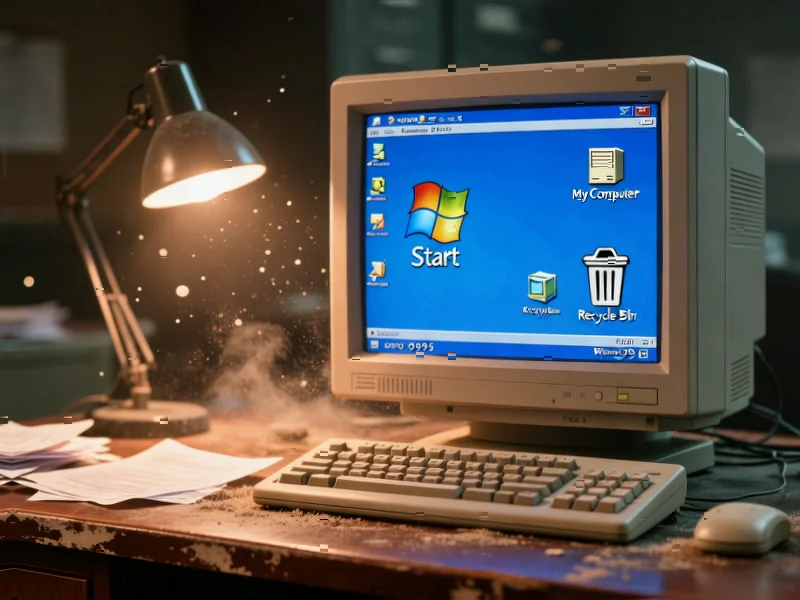According to TechSpot, Microsoft veteran Raymond Chen has revealed new details about the complex process of porting the Windows 95 user interface to Windows NT in the mid-1990s. The effort began during the final stages of Windows 95 development and culminated in Windows NT 4.0, with teams manually copying code changes between the two platforms using Microsoft’s Source Library Manager system. Key engineers including Dave Plummer worked on reconciling differences between the codebases, importing the Explorer file manager and other components while updating them for NT-specific features like Unicode support. The process required regular meetings between Windows 95 and NT interface teams and clever use of #ifdef WINNT directives to manage platform-specific code.
Table of Contents
The Great Architectural Divide
What made this porting effort so challenging was the fundamental architectural difference between these two operating systems. Windows 95 was built on the DOS foundation Microsoft had been refining since the 1980s, prioritizing compatibility with existing consumer software and hardware. Meanwhile, Windows NT represented a completely new architecture designed from the ground up for stability, security, and enterprise needs. This wasn’t just a simple porting exercise—it was bridging two fundamentally different computing philosophies that reflected Microsoft’s dual-track strategy for consumer and business markets.
The Engineering Reality of Pre-Git Development
The manual code transfer process Chen describes highlights how dramatically software development has evolved. Before modern version control systems like Git, teams relied on primitive tools like Source Library Manager (nicknamed “slime”) that lacked branching capabilities. This meant engineers couldn’t simply merge changes between codebases—they had to manually identify, copy, and reconcile every modification. The process was so cumbersome that teams likely developed custom scripts and automation, but it still represented a significant overhead that modern developers working with distributed version control would find unimaginable.
Strategic Implications for Microsoft’s Future
This convergence effort was more than just technical debt management—it represented a crucial strategic pivot. By bringing the Windows 95 user interface to NT, Microsoft was laying the groundwork for what would eventually become Windows XP and the unified Windows platform we know today. The company recognized that maintaining two completely different user experiences would be unsustainable long-term. This decision enabled Microsoft to eventually retire the Windows 9x line while preserving the familiar interface that millions of consumers had adopted, smoothing the transition to the more stable NT architecture.
Lasting Impact on Modern Windows
The techniques developed during this porting process established patterns that would influence Windows development for decades. The use of conditional compilation (#ifdef directives) to manage platform-specific code became standard practice throughout Microsoft’s development ecosystem. More importantly, the successful integration demonstrated that Microsoft could maintain backward compatibility while advancing its core architecture—a balancing act that remains central to Windows development strategy today. This effort also helped establish the Microsoft Developer Network as a crucial resource for developers navigating these platform transitions.
Modern Parallels in Platform Convergence
Today, we’re seeing similar convergence challenges as Microsoft works to unify Windows across traditional PCs, cloud environments, and ARM processors. The fundamental tension between maintaining compatibility and advancing architecture remains as relevant now as it was in the Windows 95 era. The lessons from this historical porting effort—particularly the importance of gradual, carefully managed transitions—continue to inform how Microsoft approaches major platform shifts, from the move to Windows 10’s unified core to current efforts around Windows on ARM and cloud-native Windows implementations.
Related Articles You May Find Interesting
- The Empathy-Driven Marketing Revolution
- Navan’s $6.2B IPO Tests Shutdown Market Waters
- Canva’s Affinity Gamble: Free Tools, AI Premiums, and the Subscription Trap
- The Energy Tech Conundrum: Can Innovation Break the Green Cost Barrier?
- The Unseen Android Gatekeeper: How Google Play Services Controls Your Phone



